| |
"Arthur Penn was a gentleman, and a gentle man, kind, modest and naturally curious about other people. Indeed, he shared the joke and the mystery if one asked: how can a man so reasonable and charitable have such an astonishing, passionate awareness of violence? He smiled, and said he didn't know. I believed him, although I think he was troubled by the question." |
| |
The Guardian's tribute to director Arthur Penn* |
First of all I need to apologise for missing the deadline as this disc has been out a few weeks already. We at Outsider love writing for the site championing the movies we think deserve a wider exposure, and on occasion those movies that don't need much help from us but alas, paid labour has to come first. If I'm cranking out a review a week, it means I'm not earning. Slarek is keeping his reviews steady in perfect storms of the worst kinds of situations, a feat at which I am in some awe. Apologies again if the review is not as meaty as they usually are but as I'm saying that, thoughts in my head (where else, schmucko?) about this extraordinary work are starting to pile up...
I'd not seen The Chase before but the pedigree of this era Arthur Penn is not to be sniffed at. But, and I'll be making this point often, the film was edited mostly without his input. Producer Sam Spiegel's political manoeuvring left Penn committed to directing a play in New York while the producer edited his movie in London. Robbing a director of the editing process is like cutting off an arm. Movies are made in the cutting room. Who knows what genius from Brando was discarded, what moments were passed over because of the lack of sensitivity of the person creatively in charge of the post-production. Penn was a sifter, directorially broad but editorially specific. I mean look at Bonnie and Clyde, Penn's next project, an editing revolution in one single movie. To deny Penn the right to edit his own film was akin to brutal, artistic vandalism. Shame on Sam Spiegel. But then Spiegel, by all accounts, was shameful enough without any help from the compromised creative result of lying to directors. Despite the fact that the sixties' sharpened claws were raking at old Hollywood's conventional heels, The Chase is a very studio bound movie with all the trappings of old Hollywood. What it has which is a good enough reason to give it a look is the most phenomenal cast perhaps ever assembled for a single film. Now, of course, it's phenomenal in hindsight but even the casual filmgoer might chance a "Wow!" at this lot; Marlon Brando, Jane Fonda, Robert Redford, James Fox, E.G. Marshall, Angie Dickinson, Robert Duvall and Paul Williams (who looks about twelve). Fonda, Redford and Fox are all dazzlingly young and stardom is just around the corner for the first two. After his stint in the classic Performance, Fox quit acting for a decade and got religion! Maybe working with Nic Roeg does that to you.
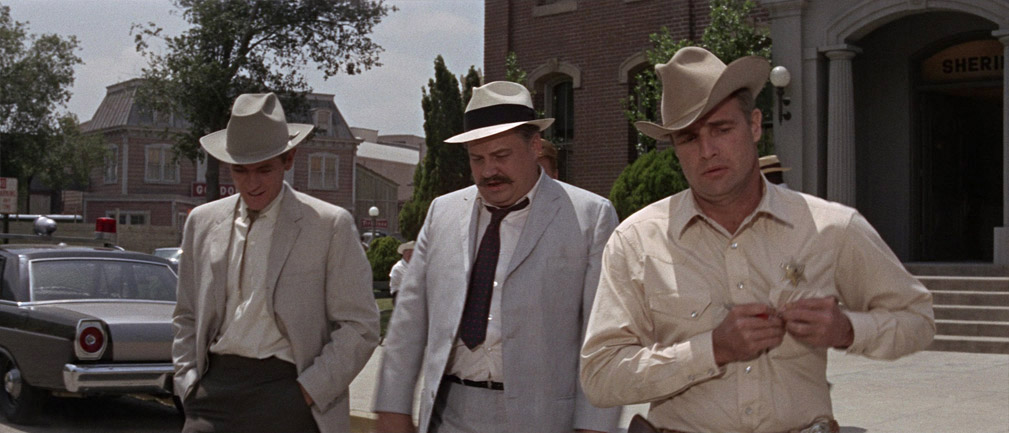
The Chase is a real curio of a movie. It boasts a big budget and a bigger producer, Sam Spiegel who would make Harvey Weinstein look like he just wasn't trying hard enough to make the casting couch an object of such abject horror. It came after Spiegel had started his David Lean associated winning streak of Kwai and Lawrence. Let's just say Spiegel had high expectations. But movie gods are capricious and the original story and screenplay of The Chase (credited – to her horror – to Lillian Hellman) was heavily rewritten by a number of writers at Spiegel's behest. Firstly, let's dispense with the silliest issues first. There is no chase in The Chase. So who knows what was going on there. There's a fugitive but no chase. The narrative is straightforward and yet very odd in a number of areas. It's the mid-sixties and two convicts have broken out of prison. They hustle a car from a good Samaritan motorist and one of the convicts smashes the poor man's skull in for his kindness and strands his partner, Bubber Reeves. Bubber heads off to Mexico. Meanwhile, in a small Texas town a powerful but lonely banking tycoon is hosting a party. Bubber's wife is dating the tycoon's son whose relationship with his father is (what's the cliché?) strained. The pacifist sheriff is well aware of the politics and the racial tension that pervade the town but he believes he can maintain order. He is convinced that Bubber was innocent of his crime. Drunken revelries ensue (the movie was described by one of the commentary team as a three party picture and there's some truth to that) and by accident Bubber heads home on a train he believed was going south. Three deeply horrific men, sexist, racist, threatening and casually violent, believe that Bubber was guilty of the crime he was committed for and they can't wait to get hold of him. More detail would be wading in to the marsh of spoiler territory.
It is the oddest film because it's never crystal clear what some characters want. It's clear that Brando wants reason and tolerance in Texas in the sixties (guffaw stifled). This is how we know he's an idealist. Secondary characters are humiliated time after time, characters that give richness to the narrative but aren't exactly crucial to the tale. In fact, there is a suggestion that the film feels allegorical and that we are seeing characters on screen more as ciphers for other ideas, ideas that managed to deftly skein over my head at a rate of knots. Let's acknowledge the thrill on seeing the Godfather and his Consigliore in the same frame before Coppola's era-defining The Godfather, Marlon Brando and Robert Duvall. Lovely. People do things in this movie that have no rational explanation unless it's looked at differently. The entire final scene could be Penn's reflection of hell (there're lots of fires) and suddenly the entire town turns up at this one location that no one is supposed to know about. The fact they then start lobbing Molotov cocktails and rolling flaming tyres around is outside any logical guesswork I may attempt to offer. It was the sixties so maybe this is what hep cats did for kicks, man. I can dig it. Two James Bond stalwarts worked on this film; Maurice Binder did the title design which Penn hated and John Barry scored the film in a style that was unmistakably Barry but it also poorly suited the movie like a second hand jacket. It serves a purpose but it's not one of his better efforts though his work is well placed in the young, more jazz-oriented party. I suspect Spiegel wanted the Bond glamour dust to sprinkle on to his production. It didn't take.
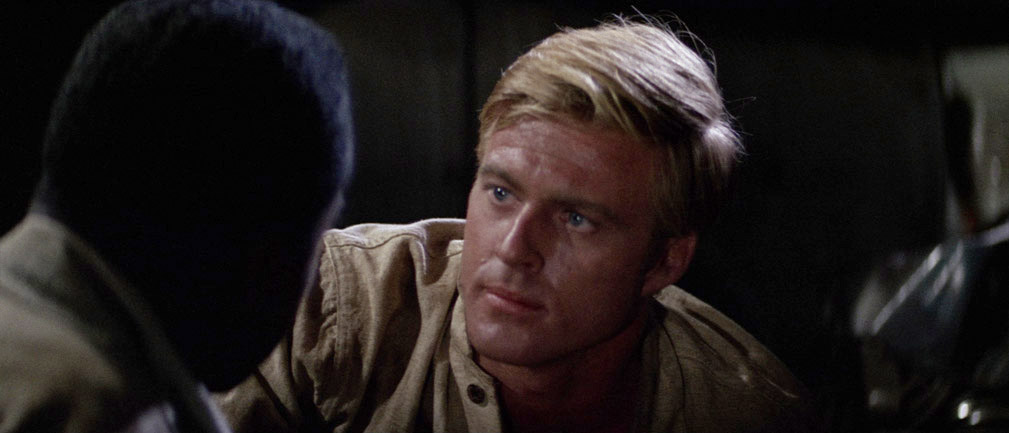
But that cast... For some deeply buried reason, sixties and seventies Robert Redford is implanted in my mind for his singular loose limbed physical grace. There's no one on Earth who moves like Redford. He's like a gazelle with a grudge in this movie. His wife, Jane Fonda is in her pre-anti war Hanoi Jane phase looking every inch a starlet. She remarked that her hair should have got billing as it was bigger than she was. Stealing the movie is of course the thespianic force of nature that is Marlon Brando. Let's lean back and really think about critical judgement. Why is an actor revered for his/her skill? It's because enough of the right people shout loudly about it for long enough. Theatrical Brando was as big a shock on stage as a live grenade would have been. The more his talent was worshipped, the more disenchanted he became and you can accurately chart Brando's later film career as one misstep after the other. But in The Chase, he was still the man to go to for something special and he doesn't disappoint. In fact the famous scene in this film, a brutal beating, is one that Brando quoted often as an example of what method acting actually was. In one of the extras Penn laments Brando moments that were lost in the London cutting room, one in particular, a look he gives his on-screen wife Angie Dickinson, one that Penn registers as pure love. The other cast are uniformly excellent. James Fox treats us to a believable Texan accent even though he is so prototypically English, it's almost surreal to listen to. His arc is probably the most interesting given what kind of an unsympathetic character he's given to play. He has some fun opening the champers bottle a little quicker than most.
The supporting players have their moments. Janice Rule as Emily is a sexual dynamo humiliating her meek husband by being forward with another man. No one does 'frustrated meek' quite like a young Robert Duvall. Clifton James as Lem is the corpulent, pistol-packing one of three that are Brando's main antagonists. My generation looks upon the actor kindly as James Bond's comic foil, Sheriff Pepper in Live and Let Die and The Man with the Golden Gun. In The Chase, he's a real bastard. Lem is the kind of character who needs to be re-educated urgently and if I say with a firm hand, both meanings apply. He does play his part in one of the oddest moments in an odd film. At the second party, the bad guys are simulating a war zone, presumably Vietnam, with props that come to hand. A stiletto shoe is a grenade that's lobbed into the room from the fireplace. Lem simulates the explosion by throwing the ice bucket's contents from below frame and despite the shoe landing wildly left of camera, it sort of works.
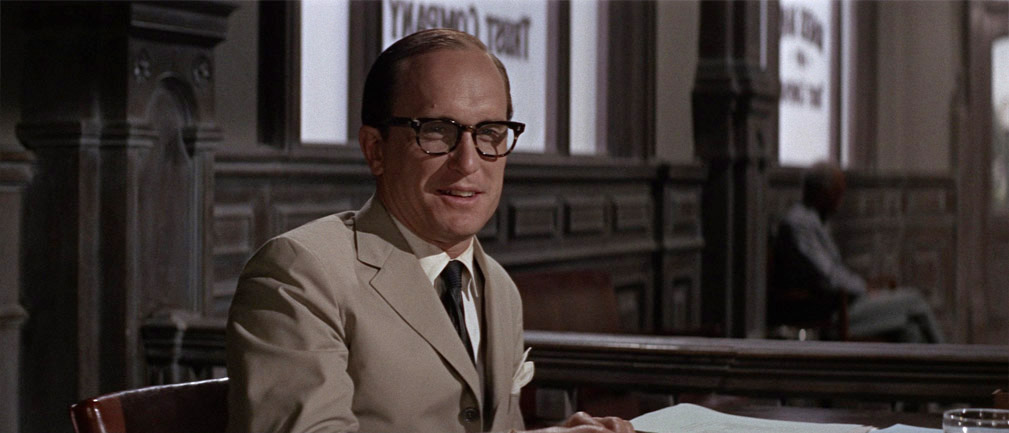
The Chase, for all its superb acting and intrigue will always be a fascinating "What if..." movie... What might have resulted had the filmmaker been able to do his job without the producer taking the edit away from him? As it stands, it's a solid Hollywood 'issues' potboiler but With Penn now dead, we'll never know what might have been but it is fun to imagine.
The 2.35:1 aspect ratio presentation looks bloody marvelous. There's a softness to the light that identifies it clearly as originated on film stock. Contrast levels are pleasing and grain is not in evidence unless you are a foot from the screen. It still amazes me that this more than one hundred year old photo-chemical technology can still be thrown onto a giant screen and look gorgeous. However, there are a few shots that were critical on focus (I can't imagine the depth of field being an issue but it clearly was). 1 hour, 22 minutes and 19 seconds in, the focus is decidedly soft on a close up of Brando in the police car, and at 1 hour, 53 minutes and 17 seconds, a close up of Redford in the junkyard shows the same inch-off focus problem. It's hardly a game changer but it is noticeable.
The mono soundtrack is perfectly clear and understandable and there are subtitles for the deaf and hard of hearing.
Audio Commentary with screenwriter Lem Dobbs, essayist Julie Kirgo and film historian Nick Redman
Known commentary contributors, the threesome of Dobbs, Kirgo and Redman (now there's a law firm) gives us a lively discussion on all relevant topics connected to the film. Like their effortlessly performed, highly informative commentary for A Man For All Seasons, this one goes at a clip and rarely sags. They air up front the idea that the film is known to be "a dog's breakfast" a quote attributed to the movie's own director, Arthur Penn. Certainly the film has an odd reputation for exuding quality and disjointedness. Dobbs reminds us that there is no chase in The Chase. Perhaps that untruth misled some people. The main events in the narrative after all are the three parties. It's due to the commentary and being reminded that Penn was not privy to his own film's edit that made me realise that perhaps the speeded up physical fight footage may have been abandoned in the edit and the conventional fight shots used instead. Directors who shoot coverage (all angles so film is really made in the editing) come under some flak. Clint Eastwood calls these directors 'guessers' but another way of judging their style would be to call them 'choosers' suggests Alan Sharpe. I've not been able to identify Alan Sharpe – too much Google info. The team muses on the film's terrible reviews and the obvious and undeniable appeal of Robert Redford. This is a terrific extra that proves how good a team these three are.
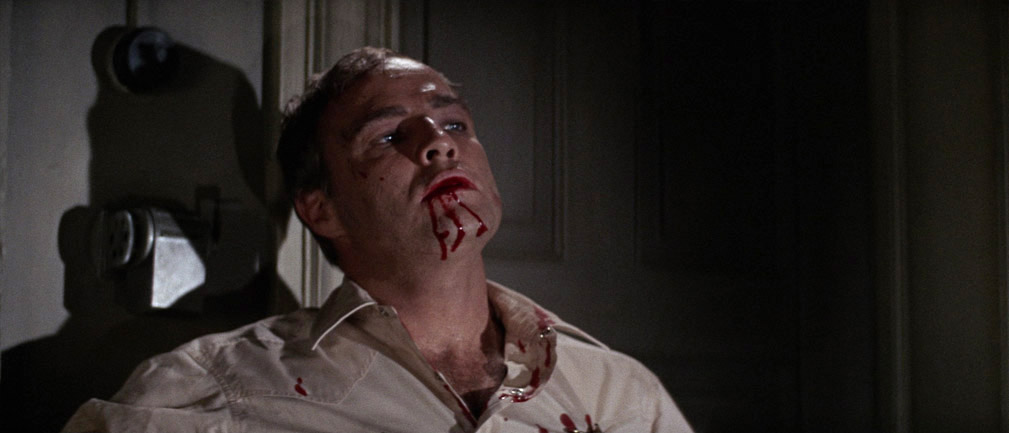
Step Back and Let Him Go: Arthur Penn on Marlon Brando and 'The Chase' (26' 08")
In a 1996 interview celebrating Brando, Penn gives us an overview including Sam Spiegel's love of the UK via his relationship with David Lean. There is a long section on how Brando has a great idea to shoot the famous beating up scene in a different way. He suggested shooting at a lower frame rate (which results in a speeding up of the action) and having the actors fight 'for real', making physical contact but a little slower. A similar effect was achieved beautifully in the remake of A Little Shop of Horrors. It was impossible to move the large Audrey plant animatronic in time with the pre-recorded songs so all the songs were performed in slow motion with actor Rick Moranis having to lip sync at 50 per cent time. Kudos. The resulting speed up made that creature look astoundingly life-like. The clips to illustrate this fight idea didn't seem to illustrate it at all. Arthur Penn was convinced he had done this** but like the film nut and details guy I am – for good or ill – I went back and painstakingly logged each strike. Anal perhaps, but here's the result...
- Chin strike, clear miss, typical Hollywood
- Stomach charge, clear miss
- Stomach grab, off camera
- Off camera, sound FX only
- Possible contact, close to the face north to south chin hit*
- Left arm swing blocked by an arm
- Open palm slap*
- Face push
- Gut punch – some contact
- Gut punch – some contact
- Gut punch, off camera
- Chin strike, clear miss (the one they keep cutting to in the Extra)
- Arm swing, off camera contact
- Punch off camera
- Punch off camera
- Punch off camera
The two * moments are the only instances I could see this slow motion performance and speed action up could have been achieved (the second was a fairly non-macho open palm slap) but I will bet my head piece of the Staff of Ra replica, that these shots have not been speeded up. Blowing my own trumpet perhaps but I feel you can almost always detect a change in film speed – not today of course as film has been usurped but a speed up is almost always comically noticeable and a slow down of a standard 24 frames per second is horribly obvious. I was outraged that Penn didn't get to supervise the cut. Knowing Penn was committed to directing a play in New York, Spiegel had the film cut in London under, one assumes, his own supervision. Penn laments all those moments that may have been lost... like (uh), tears in rain. On Brando, Penn summarises, "He needs to be out there because it's dangerous," and I believe him.
**Written before I twigged that Penn's under-cranked rushes may have been left on the cutting room floor as he wasn't present at the edit.
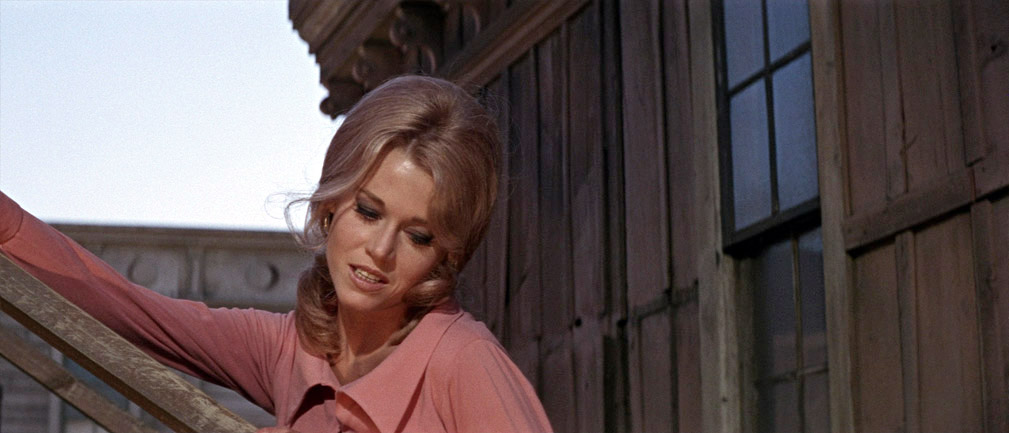
Matthew Penn on 'The Chase' (9' 02")
Arthur's son puts the cast and production of The Chase in their context and gives us very interesting background info on the production. He says "Everybody in the business knows that scenes are broken or made in the editing room." Wise man! As mentioned, producer Spiegel had the editing set up in London while director Penn was very much a New Yorker promised Manhattan as his post-production base. His political reading that his father's film is illustrating not only America as was but now, once more (heartbreaking to even write that sentence) is spot on. It was identity politics before anyone know what that hateful behaviour was called, racism by any other name would reek as rank.
Cut to The Chase: James Fox in conversation with Richard Ayoade (24' 03")
James Fox has his Brando story and his trials with the Texas accent and we never get to see interviewer Ayoade, star of TV's The IT Crowd and a writer/director in his own right, which I found odd given he's a 'name' himself. Fox also reveals how the film's politics became more interesting to him as an older man despite the turbulent state the US was in at the time of production, which could hardly have gone unnoticed. Over half of the interview is covered by mute clips of the film, illustrating points raised. It's a solid and welcome addition to the disc.
Super 8mm Version (20' 03")
Narration covers the plot contained in the missing hour and fifty seven minutes (!) but this works rather well as a stand alone. The scope frame is hopelessly compromised by the 4:3 aspect ratio and it's scratched to hell and back but it has a charm of its own and culturally, this was what real film aficionado's owned before VHS tapes.
Isolated Score
For John Barry completists, a laid music score always has variations, exclusions and inclusions as far as the officially released record is concerned. Knock yourself out.
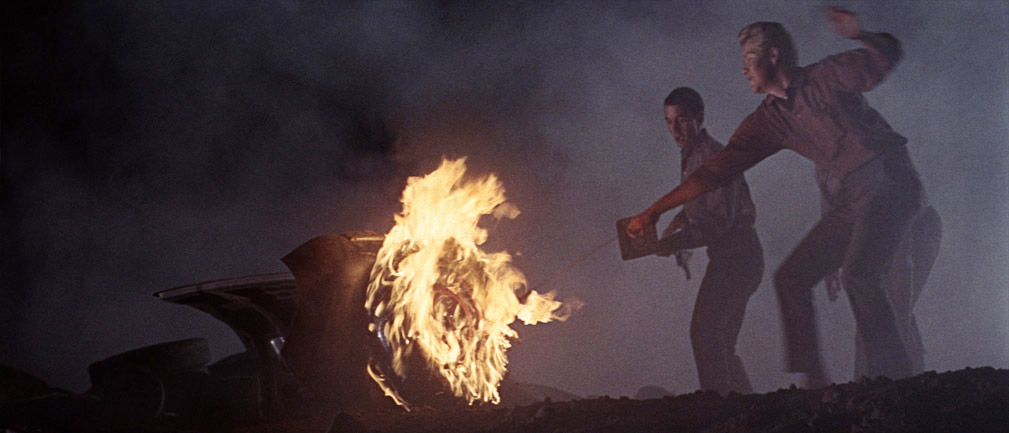
Theatrical Trailer (03' 26")
"A story of big, brawling, sprawling Texas today!" A long trailer reminding you what gems producer Sam Spiegel had made previously, this is a typical trailer of its period. Bombastic, theatrically grave and hyperbolic and very sympathetic to the rolling, burning tyre shots, it does what it said it does on the tin and clearly marketed to those with a discerning palette (clears throat).
Image Gallery
In this there are 17 colour stills including 2 presented on one screen, 8 black and white stills, 6 colourised Front of House stills and 11 colour posters from various countries.
Booklet
There's a terrific essay on The Chase from Christina Newland in which she covers the film in a review that is informative and sees the archetypes in it as the classic western ones. There's a 1993 Cineaste interview with Arthur Penn (there's obviously some repetition in the extras, hard for there not to be) and a collection of quotes from Penn on the movie about all the subjects connected to it. Then finally there are the Monthly Film Bulletin and Sight and Sound review extracts and a 1969 Robin Wood monograph excerpt. All good stuff.
The Chase is a solid Hollywood drama with a phenomenal cast. It's compromised by the fact that the producer effectively locked the director out of the cutting room (if you're in New York, you cannot supervise a London edit) but what resulted is still a fascinating movie with big stars and big ideas. Recommended.
|